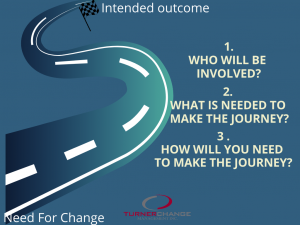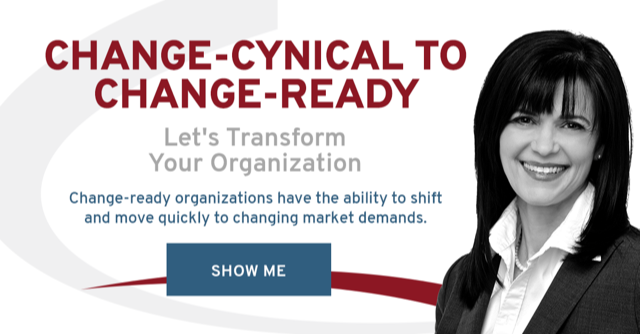You have spent months collecting the data. The facts are clear about why your department or organization needs to make the change. You think, “I have a strong case for change; there’s no arguing with the facts.” So you announce and launch your change initiative. Yet, people are not buying in. And worse, they question the facts.
You think they are resistant, but it’s not resistance. You have run into one of the fundamental human elements related to change. We are not motivated toward change based on only the facts.
Facts Aren’t Enough to Enable Change
I was given a tee-shirt in my early teens that said, “My mind is made up, don’t confuse me with the facts.” I thought it was funny and accurately described the mind of a teenager. Now, I realize it doesn’t just describe teenagers.
It’s not that we don’t accept facts or that facts and data don’t matter.
They do.
Having reliable, accurate qualitative and quantitative information is necessary before launching any organizational change effort. However, the facts are not sufficient. Relying only on facts and data when communicating change is like expecting people to quit smoking when you tell them smoking causes lung cancer. Of course, it does, but knowing that fact is rarely enough to motivate a person to quit or not start smoking.
Agreeing to the need for change and, more importantly, developing the commitment to take action requires us to connect with the situation intellectually and emotionally.
We do that through our conversations and stories. Whether the change is self-initiating or a major organizational transformation, we make sense, connect, and take action through our conversations and the stories we tell ourselves and hear from others. That’s why storytelling and conversation are the most powerful change management tools in a leader’s toolkit.
Facts become Meaningful When They are Part of your Story
Peter Gruber, the author of Tell to Win, states, “magic happens when you narrate otherwise soulless data into emotional notes that render an experience to an audience.”[1] Think about the last time you made a change in your life. The facts may have played a role. However, you probably also considered the context of the information and how it fits your life or the organization. Then engaged in conversations and created a narrative about the change before taking action.
That’s the power of storytelling. Storytelling doesn’t replace the need for analysis or analytical thinking; it supplements it[2].
I know some of you like the “just the facts” type of approach. You may feel uncomfortable dealing with emotions, or feel it’s too soft, or think you shouldn’t need to. However, every change every human being experiences is, first and foremost, an emotional experience. It is only later that we may translate and respond to the event logically. Leaders who are comfortable and able to confidently take themselves and their employees through the emotional aspects of any change have a distinct advantage over those who can’t or won’t. They also get a higher return on their change investment.
Creating and engaging people in the conversations so they are part of your organization’s change stories, helps people make sense of the event. When we can make sense of an event, we can reduce the fear and uncertainty. As a result, we open up the possibility of new thinking, which leads to taking action.
Create, Share, and Live Your Change Story
Creating and sharing your change story may feel a little intimidating at first. That’s understandable. It’s helpful to keep in mind most of our stories are shared through our conversation. It is our natural way of communicating.
 Your change story, like every story, has a beginning, a middle, and an end at the most basic level.
Your change story, like every story, has a beginning, a middle, and an end at the most basic level.
The beginning of your story is the context for the change event. Your change story begins with the why and creates an understanding of decision-making for the change event. The stories and conversations about the need for change help people internalize and make sense of it. Internalization creates the motivation to move toward something new.
The ending of your change story is the outcome to be achieved. Your outcome story conversations give people a clear picture of what your department, team or organization will look like and feel like when the new environment and activities are adopted. However, unlike our favourite sports event or television show, you need a spoiler. We need to know the ending before engaging with the change process. The conversations and storytelling around the intended outcome help reduce uncertainty and encourage us to let go of what we know. They also help to build trust in the new environment.
Last is the middle of your change story. The middle of your change story engages people in conversations about how they will make the journey, what will be needed, and how people will be supported and involved.
Don’t Leave Your Change Story to Chance
Your change stories will unfold. People share and tell stories throughout the change process whether or not you actively create and engage people. Making the time to consciously create and involve people to help you develop, share and live your organization’s change stories helps reduce the stress and uncertainty of change. In this blog and for simplicity, I talked about the change story as if it was one story. In reality, you may have multiple stories occurring within and throughout your organization.



